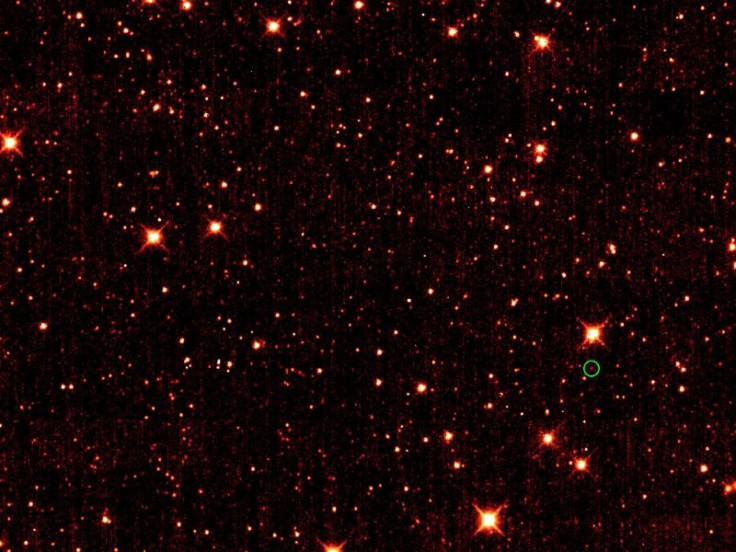Trojan Asteroid Shares Earth?s Orbit; Is It Dangerous? (PHOTO)

Using NASA's Wide-field Infrared Survey Explorer (WISE) astronomers have discovered a Trojan asteroid, which is orbiting the sun along with Earth.
By definition, Trojans are asteroids which share the same orbit as a planet located in front of or behind the planet. As a result, these asteroids are not dangerous. They constantly lead or follow in the same orbit as the planet but can never collide with it. Like Neptune, Mars and Jupiter, astronomers have long believed Earth has Trojans. Until recently, they haven't been able to find them.
"These asteroids dwell mostly in the daylight, making them very hard to see," Martin Connors of Athabasca University in Canada said in a statement. Connors it the lead author of a new paper on the discovery in the July 28 issue of the journal Nature. "But we finally found one, because the object has an unusual orbit that takes it farther away from the sun than what is typical for Trojans."
The discovery was made when the WISE telescope scanned the entire sky in infrared light from January of 2010 to February of this year. The team used data from NEOWISE, an addition to the WISE mission focused in part on near-Earth objects, to find two Trojan candidates. 2010. After follow-up observations with the Canada-France-Hawaii Telescope on Mauna Kea in Hawaii, Connors' team was able to confirm TK7 as an Earth Trojan.
TK7 is approximately 1,000 feet (300 meters) in diameter and has an orbit that traces a complex motion near a stable point in the plane of Earth's orbit. It also moves above and below the plane. It terms of distance, TK7 is roughly 50 million miles (80 million kilometers) from Earth.
The closest the asteroid will come to Earth within 100 years is 15 million miles (24 million kilometers). Discovering the Trojan is vital since NASA has intentions of sending a man to an asteroid says Connors.
"The discovery is important because it proves that Trojans can exist in orbit around the Sun in a very earth-like orbit. And since U. S. President Obama announced NASA's intentions to land a man on an asteroid by 2025, we may find Trojans or related asteroids that are the ideal candidates for that landing," Connors said.
NASA says TK7 itself is not the ideal target because it travels too far above and below the plane of Earth's orbit, which would require large amounts of fuel to reach it. There are other asteroids with similar orbits to Earth would also make a perfect candidate for future robotic or human exploration the agency says.
A look at the asteroid's path is below.
Follow Gabriel Perna on Twitter at @GabrielSPerna
Credit: NASA
© Copyright IBTimes 2024. All rights reserved.





















